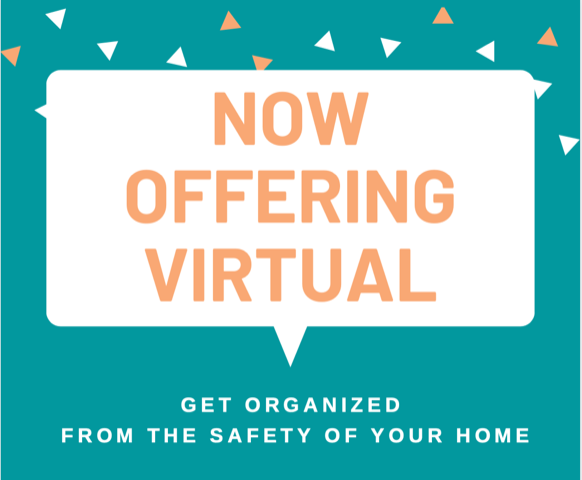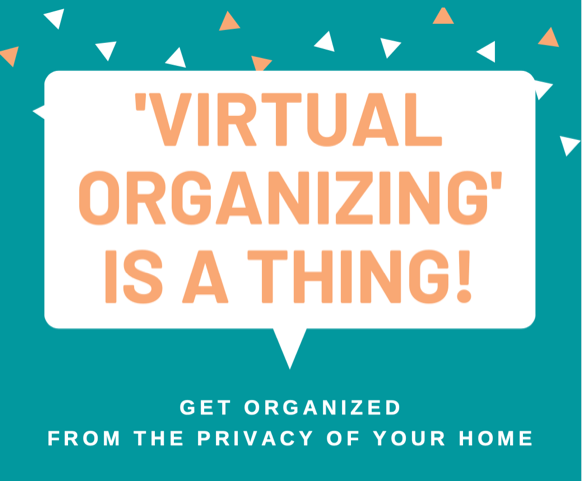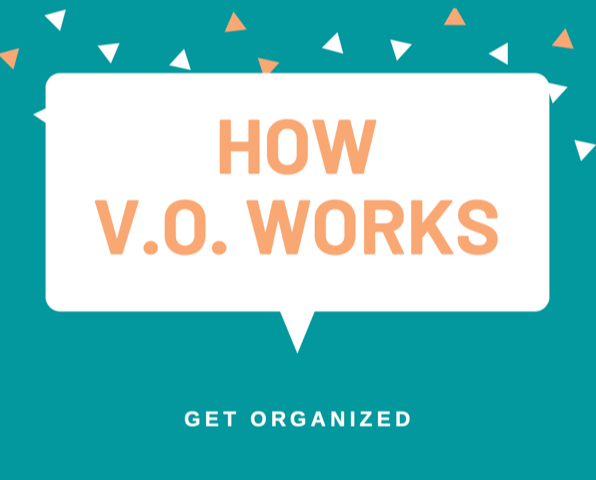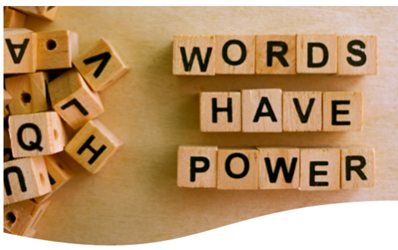Infants grow fast — I’ve had piles of clothes to prove this fact. Nearly as fast as they’ve grown into their newest cute new outfits, they’ve outgrown them already! Having a plan for keeping up with this constant rotation will save you time in the future and reduce the stress of potential growing piles. Whether or not you hope to use the clothes for future children, here are a few quick-to-tackle tips for getting ahead of the clothing clutter.
Not saving anything? Get ahead of the clutter.
Determine the spot you’ll use for temporarily stashing outgrown items. I use a basket under my son’s crib, but you can use a paper bag, box, or large trash bag on a shelf or in a closet. The laundry room is a great place, too. From now on, every time you determine something no longer fits your child, put it in your temporary storage bin. Add to this bin until it’s full, then mark it with the approximate size(s), stick the box/bag in your car, and drop it off for donation. Likely you have friends with kids and could also drop off the box on a porch for hand-me-downs. More on donations at the end.
If you know you’ll be keeping some clothes for future children, read on.
Get Clothes Prepped for Future Kids
First, determine a spot you’ll use for temporarily stashing outgrown items. I use two baskets under my son’s crib, one for items I’m keeping and one for giving away, but you can use paper bags or boxes in the laundry room, on a shelf or in a closet, or large trash bags (clearly marked and stored out of reach of the littles), etc.
Next, Every.Single.Day and Every.Time you determine something no longer fits your child, decide if you liked this outfit/item and put it in the keep bin, if not, put it in your give-away bin. Add to these bins until full. Then transfer the give-away items to a box marked with the approximate size(s) and check out donation options below. For the clothes you’re keeping, transfer to a storage bin, vacuum sealed bag or other favorite storage solution. I tend to have extra diapers that are outgrown, so I fill diaper boxes with unused/outgrown diapers and clothing from roughly the same size. Taking 1 minute each day will save you the hassle of sorting through a huge pile later.
Options for Clothes You’re Not Keeping
Depending on your interest and time commitment, you have a few options in addition to those mentioned above. From approximately most to least time consumed:
Final Thoughts on Outgrown Clothing
It’s best to donate items you’d use again and toss anything too worn out. If your kids are older and aware of “favorite” pieces, go through this process with them, so they learn from you how to stay organized and be generous with their clothes! For the babies, an everyday, constant rotation keeps clothes that fit available and stops piles from accumulating to keep the nursery looking lovely.

Between The Home Edit and Marie Kondo, everyone wants to tidy up. Coupled with sheltering-in and working from home for months, the desire to live with less and deal with our messes has grown.

Thanksgiving and the approach of more holidays add incentive to put our homes in order. “Getting organized” has become a need, not a dream.
For those who want the expertise, guidance, and support of a professional organizer, hands on help is still available. If in-person organizing doesn’t work for you, virtual organizing is an option worth considering.
Virtual Organizing is not new…

• Over ten years ago, Sheila Delson, co-founder of The Institute for Chronic Disorganization, coined the term Virtual Organizing (V.O.). She has since educated experienced organizers in the best practices and most successful methods for V.O.
In years past, V.O. had been limited by familiarity with zoom and other remote options. With so many adjusting to zoom school, virtual offices and FaceTime meetings, that tech barrier is (virtually) gone making V.O. much more accessible.
Obvious benefits of working virtually:

• Guidance on where to start
• Expert clarity for steps involved
• During this pandemic: it is a no-risk option for working together
Five bonus benefits of working remotely:
• Accountability so you’ll follow-through on each step
• Access to resources and connections only your NAPO organizer can provide
• Control over what your organizer sees…or doesn’t 🙂
This may make it easier to focus on a discreet project before you’re ready to open yourself up to a whole room or house re-org.
• Affordability V.O. sessions are typically shorter (1 – 2 hours long) than in-person appointments (which could be half or whole day commitments)
• Any progress you make will be 100% YOURS to claim
If you already have experience working in-person with an organizer, transitioning to a virtual partnership puts the emphasis on what you can do. That’s empowering!
Virtual options aren’t limited to a geographic location.
That said, there are benefits to working with someone local:
• When working with a local organizer, your organizing work can be virtual. Even so, you can still benefit from having your organizer collect items or run some errands, if they handle donations or resale of items.• In the future: post-pandemic, once you’re more comfortable, or when the scope of your project changes, you’d have the option to invite your local organizer in for hands-on organizing. It’s all about choices!
Authors: Lea Gallagher 405.458.0408 and Rie Brosco 215.435.5609

When it comes to an organizing project (or really, anything in life), the words we say out loud or think in our heads can either empower us or hold us back. Today, we want to share with you three words we loathe and three words we love. They apply to the work we do helping clients organize their space, and they have broader application in life as well.
REDUCE THE USE OF THESE THREE WORDS WE LOATHE
Maximize. Hello, corporate speak! Does anybody else think this word sounds a little soulless? When you hear the word maximize, does it imply that the only way to operate is at 100% or 110%? But everyone needs wiggle room and flexibility! We don’t need to be everything to everyone all the time, and that’s what maximize makes us think of.
Productivity. This word goes right with maximize as it is often paired together, as in maximizing productivity. It’s pretty ingrained in American culture that we need to be productive. But we are all worth more than our productivity! Don’t connect your self worth to how much you can produce for someone else. I’m in full support of efficiency, but not productivity at a negative cost or impact. Remember, sometimes the best thing is to NOT be productive. Down time rejuvenates the soul and helps make the time when we are working on a project more fruitful.
Perfect / Should. Okay, that’s two words, but they’re related. There’s no such thing as perfect, and all too often, we set unrealistic expectations of ourselves to try and reach that impossible standard. And in seeking perfection, we create a lot of “shoulds” for ourselves: we should do this or we should do that. A friend of mine often says, “Don’t should on yourself.” Just for a day, keep track of how many times you think or say you should do something. Bet you’ll be surprised by the weight you’re putting on yourself unnecessarily.
REUSE THE USE OF THESE THREE WORDS WE LOVE
Progress. This one’s about the continuous journey! We are all works in progress. We’re on our own path and at various spots along the way. Progress feels hopeful and implies growth and forward movement. And it’s okay if your progress isn’t always linear and doesn’t look like somebody else’s progress. What matters is that you’re making progress for you.
Can. A much better word than should! If you believe you can or if you believe you can’t, you’re right. It’s more of an active choice versus the burden of should. We can choose to do something. We can also choose not to do something. There’s a difference between, “I should do the dishes,” and “I can do the dishes because I want my sink to be clean.”
Enough. This one’s empowering to me (Lea) as a recovering perfectionist. Each of us gets to decide what’s good enough or what’s done enough for us. There’s wiggle room! It also implies that there’s a stopping point where you can shift your focus to other things like relaxing or spending time with family or being creative. If you spend all your time on one thing until it’s perfect, it may never be good enough and you will be neglecting everything else. And perfect isn’t actually possible, so you’re missing out for no reason. Focus on what’s enough and move on.
In today’s world where we all try to reduce, reuse and recycle as much as possible to save and improve our environment, we encourage all of us to reduce and recycle the use of the words we loathe. Instead, strive to reuse the words we love and expand the joy in our lives.
If you only had a few hours to evacuate your home because of an emergency (health- or weather-related), could you determine and locate your essential information, documents and resources?
Hurricanes, wildfires, tornadoes and a global pandemic….to say that 2020 has been a challenging year is an understatement. National Preparedness Month is recognized each September and the theme for 2020 is apropos – “Disasters Don’t Wait. Make Your Plan Today.”
In an emergency, the last thing you should be doing is scurrying to find extra batteries, locating essential documents, and worrying if your insurance is updated. It is critical to have easy access to important documents, records, and resources in the event of an evacuation or emergency.
Thinking through the details and your priorities when you are not in the midst of a crisis is vitally important.
DOCUMENT – the information and resources you already have (for example, your health insurance information, your ‘in case of emergency’ contacts).
Tip: Store your important documents in the Cloud which affords you access no matter where you are. Alternatively, if you plan to keep your documents in a paper-format, store them in one binder/folder and consider laminating.
CONSIDER – the information and resources you may need in an emergency (for example, flood insurance, extra prescription medicine).
Tip: Prepare an emergency kit with the essentials.
ORGANIZE – the information for easy access. Having everything in just a few places, rather than scattered through the house, is a good idea.
Tip: Create a roadmap (in a physical or digital binder) that details where the information and documents are located. My Life Packet is a comprehensive life and legacy affairs organizing workbook that guides you through the process.
SHARE – your plan with your loved ones.
Tip: Establish a family communication plan.
Taking inventory of what you would need in an emergency can save you and your family time, money, and stress. Although it may feel overwhelming, organizing and taking inventory of key information will not only help you ‘weather’ a storm, it will also create peace of mind.
In 2015 Forbes reported a Bureau of Labor statistic affirming that, in 1930, the average American woman owned 9 outfits. This, as opposed to a current day figure of about 30 outfits – one for each day of the month.
In 2016 a survey of 1,000 American women was conducted by ClosetMaid. It found that women only really like 10 percent of their wardrobe. It also found that one in ten women are depressed when they open their closet and 40 percent say that they don’t like any of their clothes.
As Americans, we are blessed with an abundance of choices when it comes to clothing and fashion. A broad variety of style, quality and affordability surround us. Yet, we can surmise from these two studies that, in the U.S., we have more clothing than ever before and are less satisfied with what we have. So where does the disconnect lie? How do we get from Point A – the clothing that we own; to Point B – happiness?

There are many explanations centered around the social and psychological motivations behind our large wardrobes and our dissatisfaction. Compulsive shopping, ecological reasoning, “retail therapy”, depression and loss are just a few theories offered.
The anxiety experienced when contemplating and processing the variety and abundance we face upon viewing our overcrowded wardrobes adds a real neurological strain. We end up starting our days stressed-out even before we walk out our front door.
Although it remains important to address the underlying reasons for overwhelmed and overwhelming closets and spaces, professional organizers (unlike therapists) also get the opportunity to directly address the physical issues as well. Addressing spacial congestion is empowering, encouraging a feeling of control over the environment, a feeling that can help ward off anxiety and depression.
Here are three simple tips for actions that you can take today that will make a difference every day.
Start with unused hangers and empty boxes that take up space for absolutely no reason. A dozen empty hangers can take up to a foot of space on your hanging rod – a whole foot! There may be many hiding between crowded garments so be sure to filter through everything. Next, begin at one end and review each garment. Remove all items that can be tossed or donated; toss the trash, then bag and label the rest for “Donation”.
Unless you live in a temperate climate where your entire wardrobe is versatile for year-round use, there are very few reasons to keep all of your clothing at hand in your closet all of the time. Separate items you are keeping into two seasonal categories: Fall/Winter and Spring/Summer. Keep the current half at hand in your closets and dressers. Store the other half in plastic bins or space bags. Take advantage of the seasonal switch to purge items that you no longer want before storing the rest.
Okay, I will admit that this may sound a little “organizer”-geeky, but try it out before you scoff. Imagine you are looking for your favorite pair of black pants. The ones that fit just right and aren’t too long or too short. Do you have to go in between all your tight spaces in your closet to find them before realizing they are at the cleaners? Not if your closet is color coordinated. You will simply go through the section of black pants. Not there? Then they are in the laundry. Need to put together a quick outfit? Easy to do when your eyes are simply matching colors and not hunting between randomly hung, tightly crammed fabrics.

While we’ve been sheltering-in-place and social-distancing, I’ve been thinking about all the traveling I’ve done. Whether it’s a quick overnight or weekend trip or something longer, like 2 – 3 weeks, I’ve been remembering my wallet and how it gets filled with all sorts of paper not related to anything I needed to carry with me.
My wallet has been filled with receipts, ticket stubs, candy wrappers, etc. Were all these extraneous things necessary to stuff into my wallet? For me, this was the best place to keep all these items temporarily until I got home, when I could empty my wallet, file what I needed to keep in their respective “homes”, and discard the rest (I sure didn’t need to keep a candy wrapper). Do many of you have things like this in your wallet all the time?
How much you can fit in your wallet is really a metaphor for how much you can fit in your surroundings. Are you ready to “Empty Your Wallet” (and I don’t mean emptying it of money)? I’m talking about your wallet representing how light you would feel if you emptied your life of all the extraneous things that don’t need to be kept in it. What is actually important to you? What do you really need, not want, to keep in your life to make it seem less weighty? The 4 benefits of having an “empty wallet” are:
“Do not wait: the time will never be ‘just right’. Start where you stand, and work whatever tools you may have at your command and better tools will be found as you go along.” Napoleon Hill
Now is Your Time to “Empty Your Wallet”